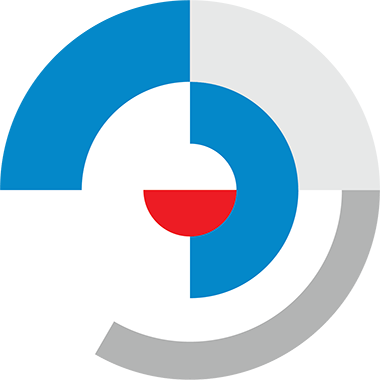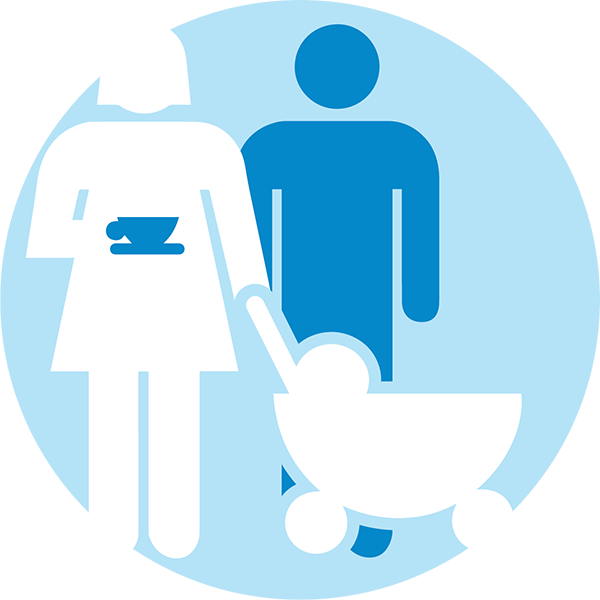





Target audiences and user characteristics.
Who are we designing for?
Designs are intended to engage, inform, entertain and serve the needs of specific people. However, designs are never ‘one size fits all’. No single design solution will ever meet the expectations of all people. Designs need to be tailored specifically to precise groups to be successful. The people to whom designs are directed are called the target audience or users. There are many different kinds of target audiences. Trend researchers, marketing and designers study the exact needs and preferences of different target audiences. They refer to them by dividing them into different groups. When designers understand the interests, needs and preferences of their audiences, they can engage and meet their needs. This page shows students how to divide (or segment) target audiences and users into different groups and how to describe them effectively.
Takeaways

Good to go
audiences
Audiences are specific groups of people for whom design solutions are intended. Successful design requires understanding what differentiates (makes them different) audiences through demographics (age, gender, culture, socioeconomic status, location), psychographics (attitudes, values, interests, lifestyles), and behavioural patterns (technology interaction habits). Effective audience segmentation allows designers to create tailored solutions that meet precise user needs rather than ‘one size fits all’ approaches.
- Demographics provide foundational facts about audience members. This includes age groups, gender, culture/ethnicity, socioeconomic status, and location. While demographics establish basic audience parameters, people with similar demographic profiles can have vastly different preferences, making demographics alone insufficient for effective design targeting.
- Psychographics reveal deeper audience motivations. Psychographic characteristics examine what audiences think (attitudes, values, opinions) and what they do (interests, hobbies, lifestyles). This approach recognises that people with identical demographics can be completely different audience members based on their beliefs and lifestyle choices.
- Behavioural patterns show how audiences interact with design solutions. This includes interaction patterns, user journeys, device preferences, and social media engagement. Behavioural data uses analytics and tracking to understand actual usage behaviours rather than stated preferences, enabling designers to optimise user experiences.
- Effective audience research requires ethical data collection. Designers must collect data through responsible research methods while protecting personal information and using inclusive language. The goal is creating detailed audience personas combining demographic, psychographic, and behavioural insights to guide specific design decisions.
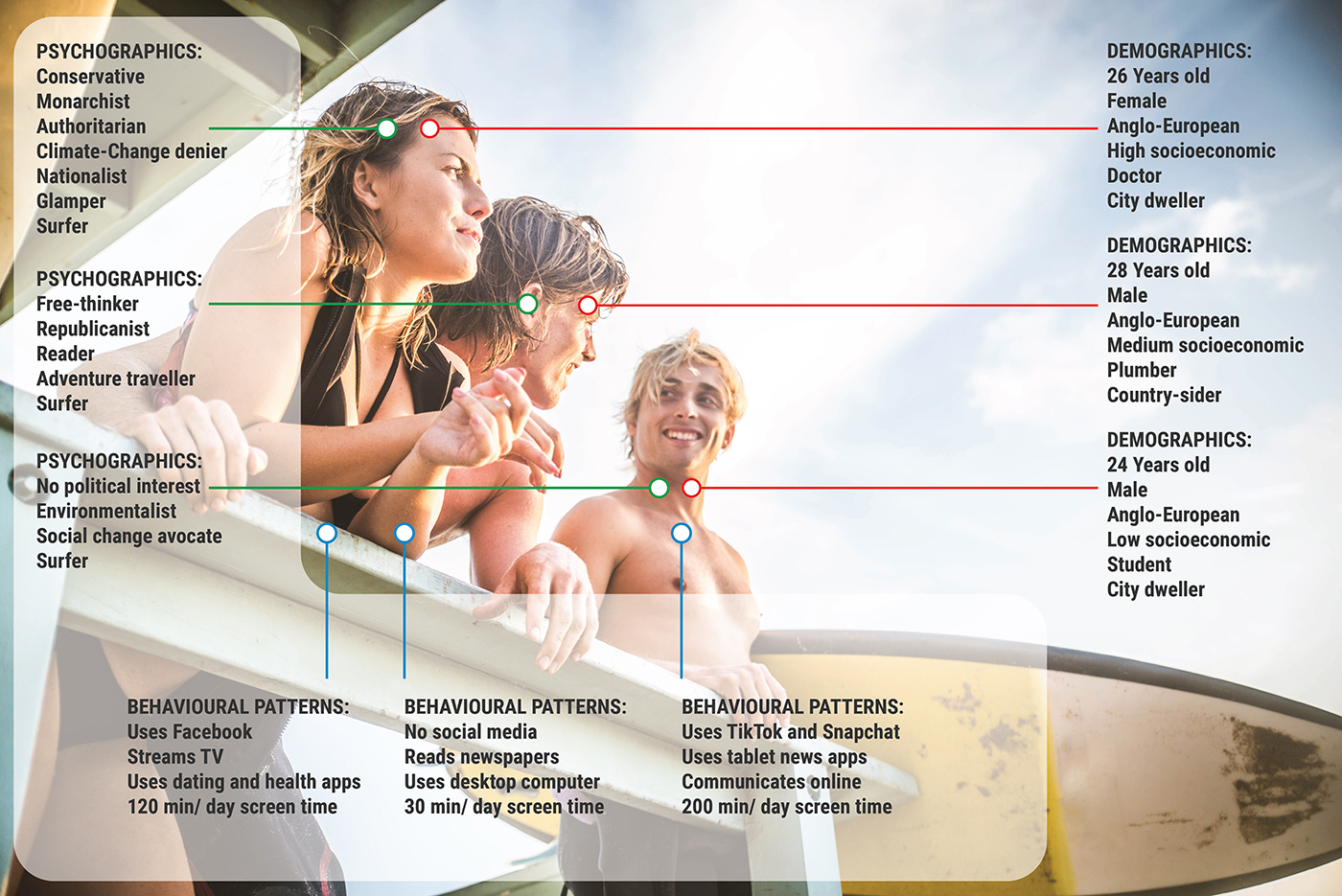
Introduction
Designers use different ways to segment, or group, people who might be interested in a product, service, or experience. This helps them understand who they're designing for and what those people might like or need. Contemporary designers use a variety of methods to segment target audiences effectively. Audience segmentation involves dividing a larger market into smaller groups based on shared characteristics and behaviours. This allows designers to create more tailored and relevant design solutions for each segment.
Understanding audiences and users can also uncover any pain points. This term refers to specific problems faced by customers or potential users and can reveal problems and opportunities for designers in every field of design.
What is an audience or user?
An audience is a group of people for whom a design solution is intended to engage or serve. Audiences can be composed of a wide range of people, like those who see an advertisement on TV or shoppers in a department store. However, marketing campaigns are more effective when they are directed more precisely, to specific target audiences. Designers meet the needs of specific target audiences and users by understanding their precise nature. They understand what exactly differentiates one audience member from another.
When do we refer to audience members and users?
Students in VCD refer to audiences and users when they are analysing designs in written work and when they are designing to meet the needs of specific people. Students also require a firm understanding of how to describe audiences when they are writing a brief.
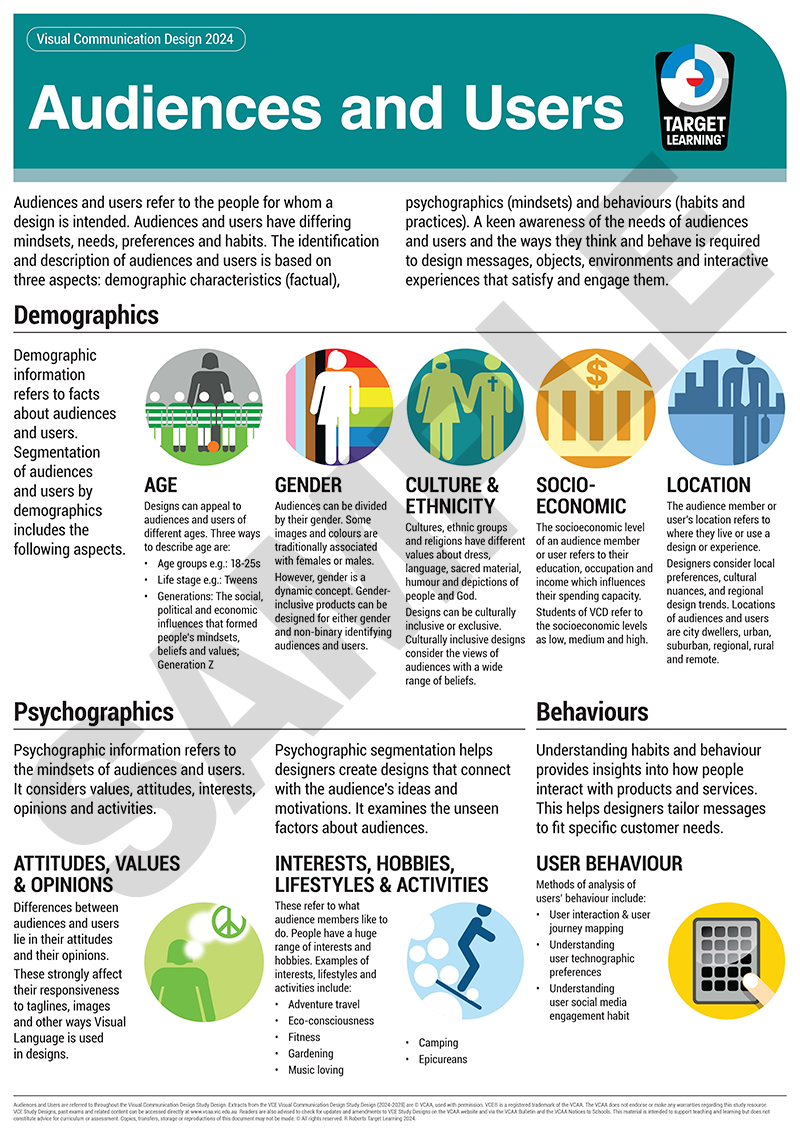
How do we describe an audience member and users?
How do we collect data to segment audiences?
Data to define a person’s demographic, psychographic characteristics and information about their behavioural patterns can be collected using a range of quantitative and qualitative research methods. These include but are not limited to;
- Focus groups
- Interviews
- Surveys, questionnaires
- Personality tests
- Website and browsing analytics
- Browsing data
- Social media use
It is only by gaining a complete and detailed profile of an audience member or user that designers can create relevant and fulfilling design solutions.
CAUTION

Good to know
Ethical research methods
Demographics
The facts about audiences and users. Demographics refers to categorising audience members and users based on demographic factors such as age, gender, ethnicity, income, education, occupation (socioeconomic status), and location. Designers use this information to create designs that resonate with specific groups.

AGE
There are three ways we can use to describe the age of audience members.

AGE GROUP
We rarely find that a product is aimed at people of one age. It is more likely that they are aimed at people within a range of ages. Some examples of age ranges are;
- 0-3,
- 10-15,
- 18-25,
- 30-50,
- over Fifties.
LIFE STAGE
We can also refer to the stage of life people are in. Stages of life influence the audience’s purchasing decisions. People want products that suit their stage of life. Some ways to refer to stages of life are;
- Toddlers,
- Pre-schoolers,
- Tweens,
- Teens,
- High School students
- Yuppies,
- First-time mothers
- Grey nomads
- Pensioners
GENERATION
People can also be categorised by the generation into which they were born. Dividing the market by generations looks at the social, political and economic influences that formed people’s attitudes, beliefs and values. Dividing a market by generation is not so popular, or precise now as people do not agree on the personality traits, nor which years actually define generations for those when born into the digital age. Generations just don't seem to last as long as they used to. Some names for generations are;
- The Great Generation born 1901 – 1927
- The Silent Generation born 1928 – 1945
- Baby Boomers born 1946 – 1964
- Generation X born 1965 – 1980
- Generation Y or Millennials born 1980 – 1994
- Generation Z born 1995 – 2009
- Generation Alpha born 2010 – 2024
- Generation Beta born 2005 – 2039
GENDER
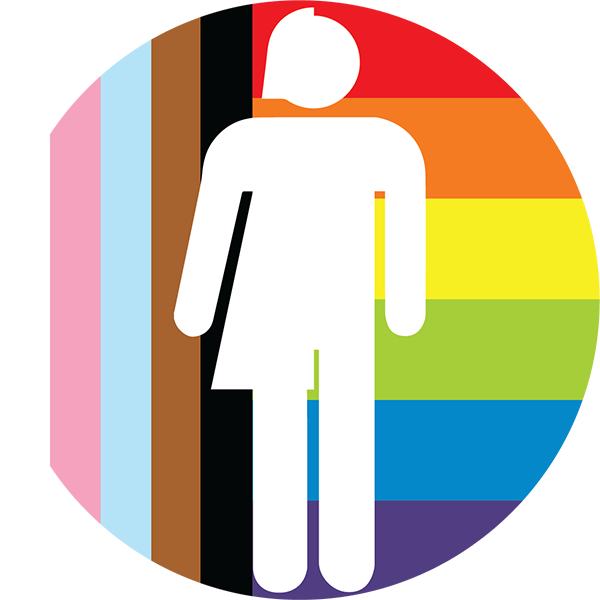
Traditionally a person’s gender has influenced their purchasing preferences. For example, cleaning products were aimed at women whereas outdoor products were aimed at men. However, these stereotypes are becoming outdated, especially now as gender is accepted to be a dynamic concept. British giant Unilever has moved to ‘unstereotype’ representations of people in advertising ‘with the aim of eliminating harmful and diminishing portrayals of people …’ 1.
Researchers should determine if asking a person to identify as a particular gender is useful or relevant for the context of the data being collected. In any case, students must use inclusive language that allows for a range of responses, including an option of ‘prefer not to say’.
“(The) General recommended approach for the measurement of gender.
- Acknowledge that gender is not a binary concept for some people. Some people may identify in a different way to male or female or have a gender that is fluid.
- Be mindful that not everyone’s sex and gender will be the same. Why? Sex is recorded at birth, and gender is assumed to be the same. However, some people realise that they do not identify that way and express their gender differently.” 2.
ESOMAR also recommends researchers ask participants if they are;
- male
- female
- another gender
- prefer not to answer. 2.
CULTURE & ETHNICITY
Students are encouraged to act with sensitivity and inclusiveness when framing research questions or referring to audience members’ culture and ethnicity. They are reminded to only refer to this characteristic if and when it is directly relevant to their research question.

Designers conduct ethnographic research to understand the cultural and social context of their audience. This helps create designs that resonate with specific cultural groups.
“'Ethnicity' refers to the shared identity or similarity of a group of people on the basis of one or more distinguishing characteristics.
These characteristics include:
- A long shared history, the memory of which is kept alive.
- A cultural tradition, including family and social customs, sometimes religiously based.
- A common geographic origin.
- A common language (but not necessarily limited to that group).
- A common literature (written or oral).
- A common religion.
- Being a minority (often with a sense of being oppressed).
- Being racially conspicuous.” 3
SOCIOECONOMIC
Students are encouraged to refer to the socioeconomic levels of audience members and users in general terms and to refrain from asking respondents to declare their income levels when conducting demographic research.
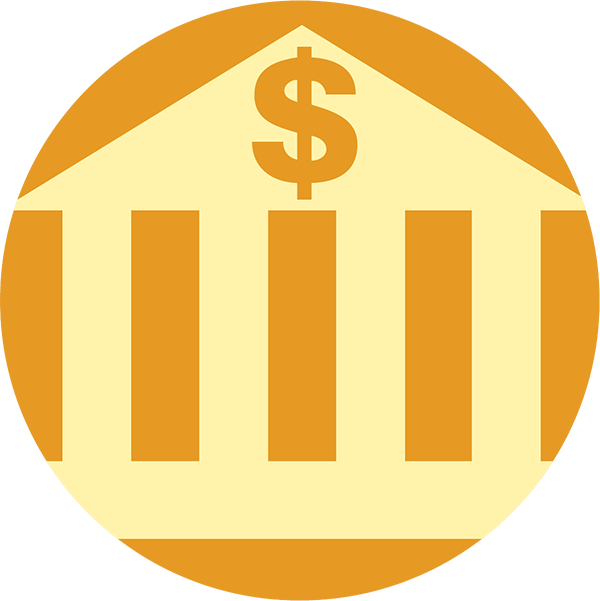
A person’s socioeconomic status or level is calculated by a range of different factors depending on the industry in which it is used. For the purposes of Visual Communication Design socioeconomic level refers to an aggregate of points given from three influential factors. These are;
- level of education; ranging from no schooling finished to a post-graduate degree
- occupation; ranging from temporary, casual, through skilled trades to higher managerial and professional
- income; ranging from no income to high-level income with accumulated assets
Market researchers categorise socioeconomic levels into five groups known as ‘quintiles’. These are formed by complex calculations. Students of VCD refer to the socioeconomic levels of audience members by the terms; low, medium and high.
LOCATION

The audience member or user’s location refers to where they live or use a product or experience. The location where they live influences their motivations for purchasing different kinds of products and experiences. Motivations appear in literal or metaphoric ways. For example, some people purchase a four-wheel drive because they live on a farm and need that capability in a car. Others, like me, have one because I live in the city and like to be reminded of the outdoors when I go shopping! Designers consider local preferences, cultural nuances, and regional design trends. Locations for audience members and users can be referred to as;
- City dwellers,
- Urban, suburban
- Regional
- Rural
- Remote
References
- Business Wire, Unilever Calls on Content Creators and Distributors to Eradicate Stereotypes, viewed 19 August 2023, <https://www.abs.gov.au/statistics/classifications/australian-standard-classification-cultural-and-ethnic-groups-ascceg/latest-release>.
- ESOMAR, Gender: Best practice recommendations for multi-country work, p3 and 4 viewed, 19 August 2023, <https://esomar.org/uploads/attachments/clemsb2gt2kuors3vr33zu6og-demographics-best-practice-recommendation-gender.pdf>
- Australian Bureau of Statistics 2019, Australian Standard Classification of Cultural and Ethnic Groups (ASCCEG), ABS, viewed 19 August 2023, <https://www.abs.gov.au/statistics/classifications/australian-standard-classification-cultural-and-ethnic-groups-ascceg/latest-release>.
task

Show I know ...
1.1 Define yourself and a classmate
Work in partners to describe yourself as an audience member using the five characteristics of Demographics.
1.2 Define a hero
Define someone famous you admire using the five characteristics of Demographics.
1.3 Define the audience of a visual communication
Choose a book or magazine in your classroom or house. Describe the likely target audience using three of the characteristics of Demographics.
1.4 Explain design decisions
Identify and explain two design decisions that were made to ensure that the visual communication you chose in Task 1.3 catered for the audience you described.
Jump to
Psychographics

Audiences can also be segmented by their different interests and lifestyles. (Image: Groundpicture@shutterstock.com).
Psychographic characteristics

ATTITUDES, VALUES & OPINIONS

INTERESTS, HOBBIES, LIFESTYLES & ACTIVITIES
These characteristics refer to what audience members like to do. People have a huge range of interests and hobbies. Whilst certain products are aimed at people who practice certain interests such as camping or extreme sports, others can be marketed to those who are interested in such pastimes but are yet to take them up. Examples of interests, lifestyles and activities include;
- Adventure travellers
- Eco-conscious consumers
- Fitness enthusiasts
- Gardeners
- Music lovers, festival-goers
- Campers, Glampers
- Art lovers
- Food and wine lovers
- Antique collectors
- Historians
task

Show I know ...
2.1 Define yourself and a classmate
Work in pairs to describe some of your values, opinions, interests and preferred activities. Share your answers with the rest of the class.
2.2 Survey your friends
Given that your classmates are in the same demographic as you, let’s see if we can segment target audiences more meaningfully. Design a survey that will find out your classmate’s views on a number of current issues. Create a fictional or real audience persona based on the responses you get. Remember to conduct your survey in accordance with Ethical Research principles.
2.3 Imagine an app
Using the audience persona you created in Task 2.2, conceive of an app that the person might find useful in their life. Make an illustrated diagram shown the design decisions you made and how they cater for the needs of the user in your audience persona.
Jump to
Behavioural patterns

The ways people engage with and use interactive experiences is important for designers to create solutions that meet their needs. (Image: Victollio@shutterstock.com).
HOW USERS INTERACT WITH TECHNOLOGY
Delving further into the minds of audiences and particularly users of interactive digital experiences reveal differences in the ways they use products. Designers need a clear understanding of how, when and the reasons why audience members use design solutions to ensure that they deliver relevant, engaging and enjoyable products and services that meet their needs.

INTERACTION AND USER JOURNEYS
This involves categorising audiences and users based on how they interact with products, services or content. Designers can tailor design solutions to accommodate different usage scenarios or levels of expertise. A user journey refers to the series of steps it takes for a user to reach their goal when using a particular website or application. User journeys inform the design of interactive experiences by identifying ways to enable a user to achieve their goal as quickly as possible. A user journey map is a visual representation of a person’s experience using a website or digital application. Cookies (data collection for analytics) are used to gather data about customers’ experiences on interactive experiences.
TECHNOGRAPHIC PREFERENCES
In the digital age, designers often consider the technological preferences and behaviours of their audience. This includes factors like device usage (e.g., mobile, desktop), social media platforms, and digital interaction preferences. This website is designed for people primarily using desktops and tablets at home and in classrooms. However, Target Learning is mindful that more people are using their smartphones to access its content, so it is also made to be read on small-sized screens.
SOCIAL MEDIA ENGAGEMENT
The thing about using social media that is fundamentally different from watching the news on TV or reading it in a newspaper is that every step of a user’s journey; each screen they visit, the time they take on each screen, the directions they click, the key-strokes they type is recorded and used for data analysis by owners of each site. Data about the ways users engage with sites is used for the improvement of current and future sites.
task

Show I know ...
3.1 Describe your engagement with technology
Working in pairs, describe your and a partner’s engagement with technology and create two Behavioural Patterns profiles. In your answers consider;
- what platforms do you use?
- what devices do you use?
- when you use technology most
- how you scan or read a page or site
- what you use technology or social media
Try to be as honest as you can. Share your answers with the rest of the class.
3.2 Design a campaign
Imagine you have been asked to design a social awareness campaign for your school. (Your teacher might help you choose a topic). Using one of the Behavioural Patterns profiles you created in Task 3.1, suggest the best way to communicate your campaign to students just like in your profile, using digital communication technologies or social media.
